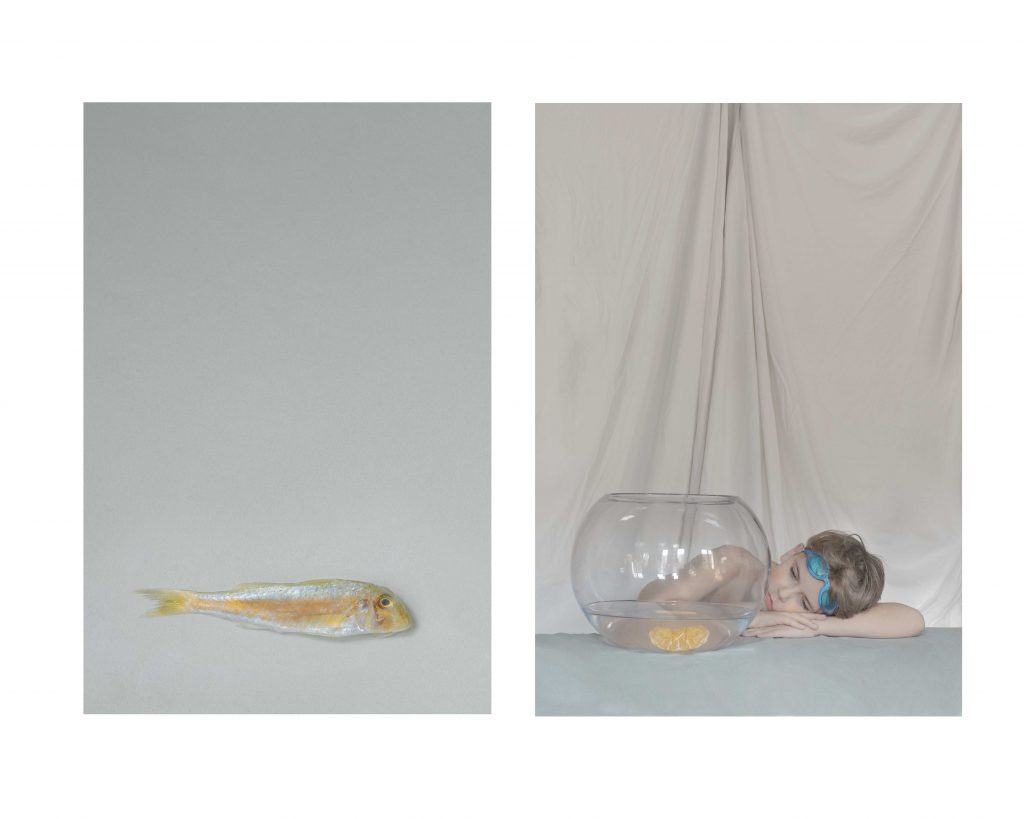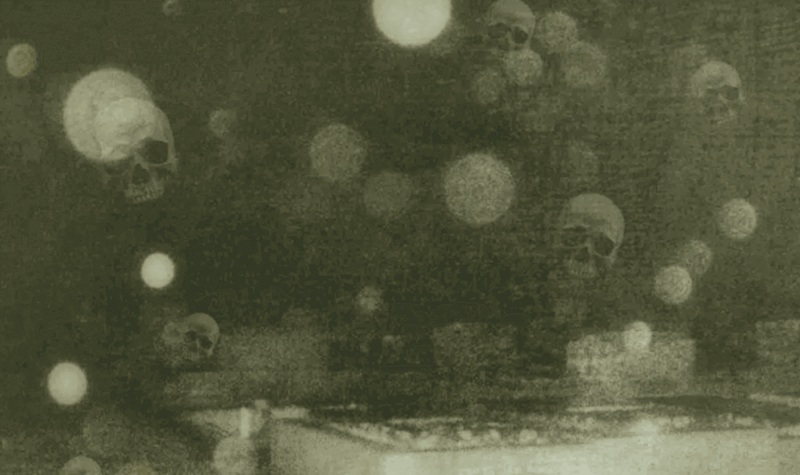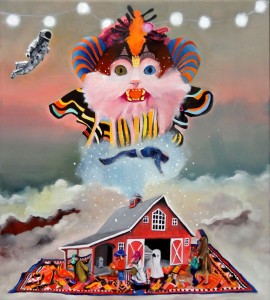Today I interviewed Silvia Sasso, an Italian photographer based in Rome. Sasso will soon present a solo-show at Fondamenta Gallery (Rome). Together we questioned the relation between body, beauty, and society, thinking of their connection also in terms of “abjection”.
Her photographic style is deeply influenced by the advertising world, where she formed and continues working. Sasso’s photographs present a multi-layered critique of society, hidden behind minimalistic, visually toned down compositions that make the imagined accessible to all.
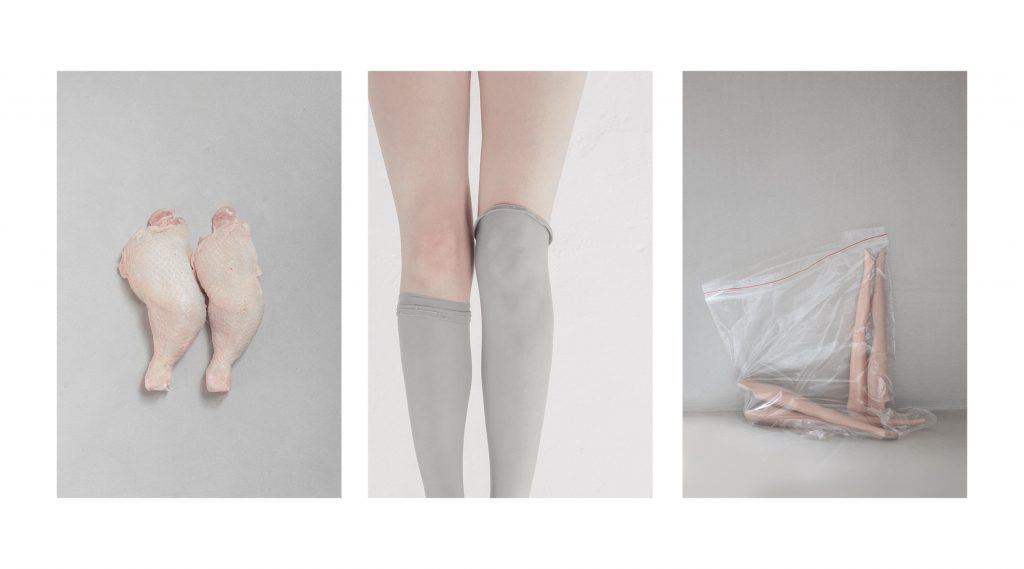
Naked bodies are juxtaposed to spilt milk, broken eggs, dead fishes recreating a sense of the ‘Abject’, as Julia Kristeva named it. There’s an alienating disgust in seeing these decontextualised elements recalling the human body, yet not being a body anymore. This bedazzlement grows into you, forcing the beholder to reflect upon the deeper meanings concealed behind a harmonic aesthetic.
Why did you choose photography?
Probably because I cannot write, nor draw or sculpt. Working in the advertising sector I felt more familiar with this visual language and its ways of expression. Even though I started quite late, it came naturally to take the camera trying to isolate a portion of the world.
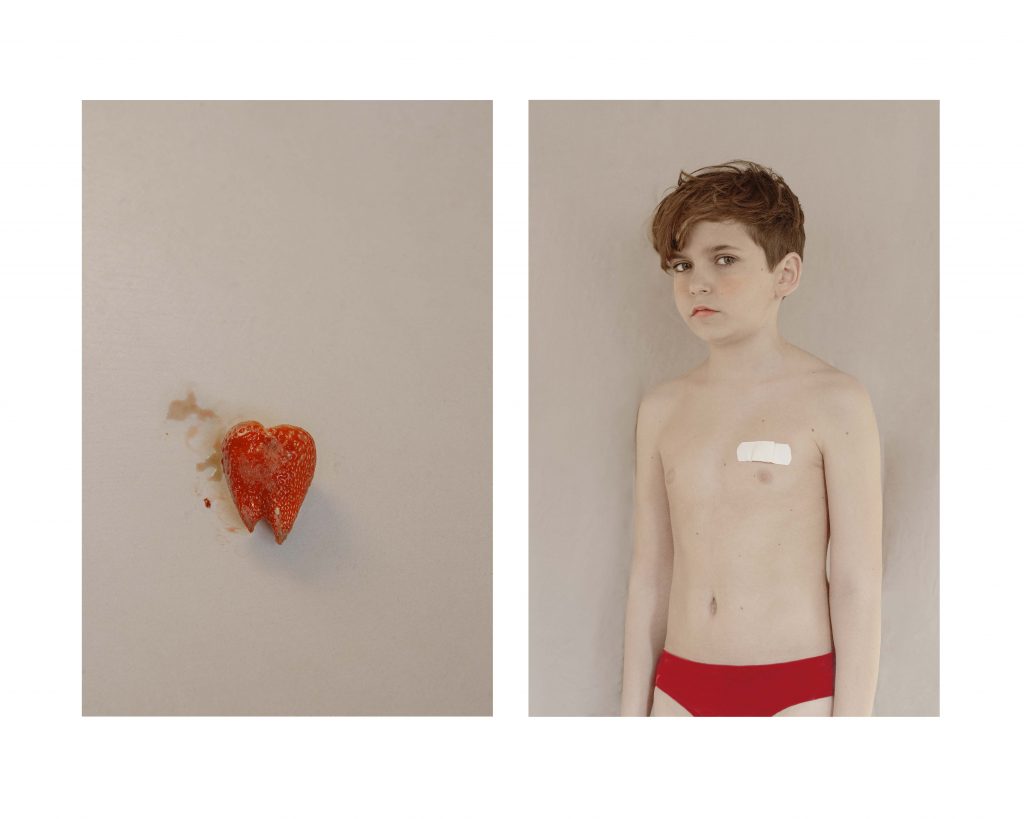
Can you tell me about your upcoming show at Fondamenta Gallery?
The show, organised by InsideArt, was meant to be hosted last spring at Fondamenta, a gallery at the service of a selection of artists which the magazine decides to cultivate and promote. Due to the exacerbation of the pandemic, we had to postpone the show to a future date.
The exhibition will be around the concept of ‘projection’ – a primordial system that enables one to transfer certain emotions onto other subjects. This way a new identity can be born from the free associations between subjects. These create new relations between being and knowing, visible between skin folds and leaf veins, at the conceptual edge between a peeled fruit and a woman, undressed, or simply in the visual analogy of a body enveloped into a plastic bag and the same plastic bag containing some fishes.
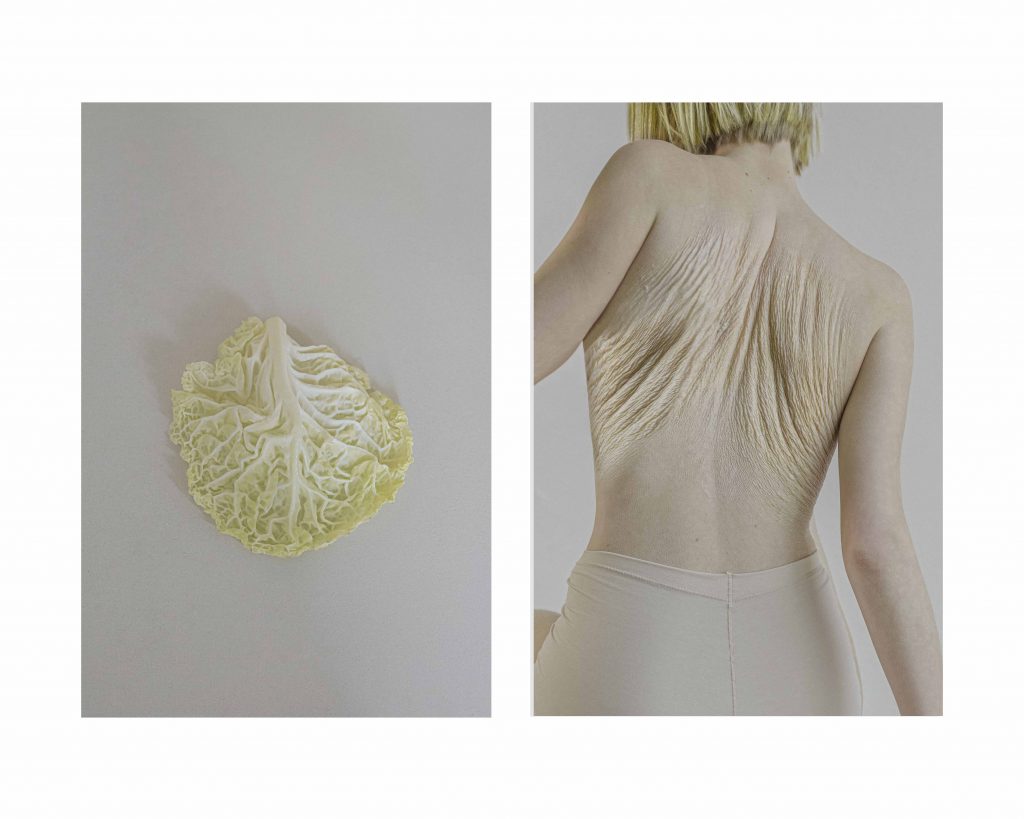
Your photos are bare, stripped of all superfluous items. Why did you adopt a ‘less is more’ philosophy?
Having worked in the advertising sector for 20 years, I’ve absorbed its language made of clarity and synthesis. I leave the essence of the story, removing any subject which could potentially distract the viewer, or be dystonic with the rest. This clean language enables anyone to approach the image, appreciating at least a first interpretation of it. Yet, my work invites a deeper, multi-layered interpretation, as “pure essence” is only valid on an aesthetic level. As you get deeper into the layers of meaning, the photo unveils a more conceptual and complex structure.
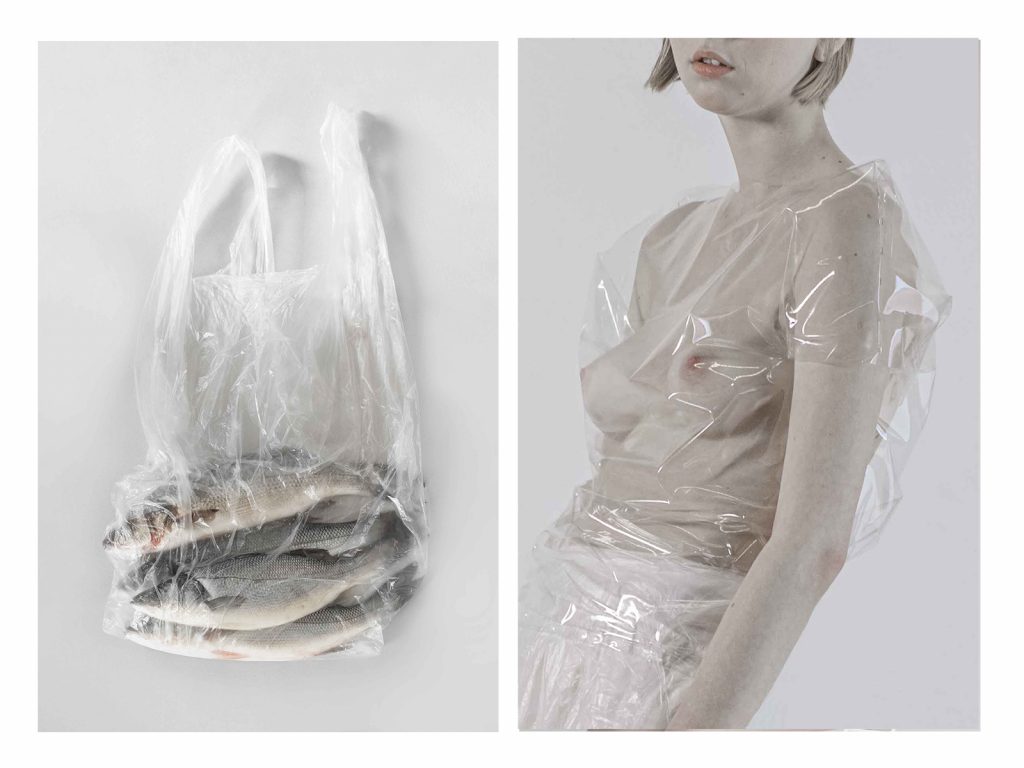
In your photographic diptychs, you often juxtapose still life and edible goods (eggs, mushrooms, peeled oranges) to the female body. What kind of significance does food assume in these parallels?
These diptychs find their roots in my research on the women body and a will to objectify it. This objectification – far from depleting the body – aims at reconnecting it to its natural physicality, as to make nakedness universal. No longer the body of a specific woman, but the body – or just parts of it – of THE woman.
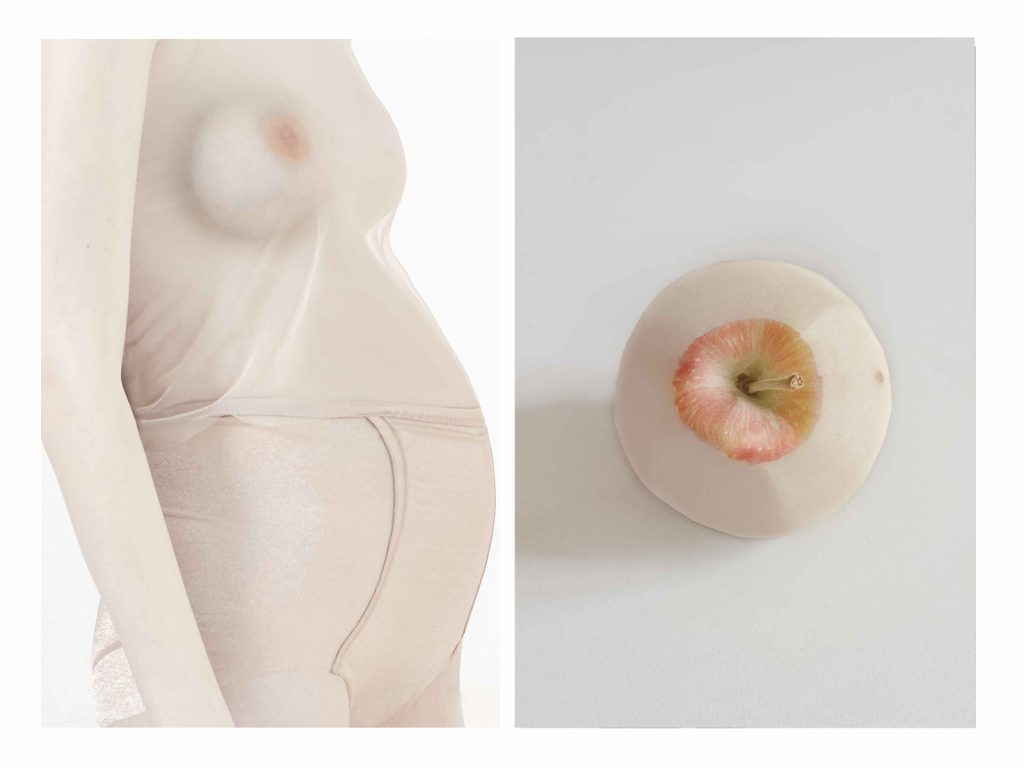
With food, I investigate further the nature of the body. Isn’t there a direct link between food and the body in nature, indeed? Isn’t it true that without nutrition bodies themselves would not exist? Aren’t bodies and flesh (from animals) food themselves? When we love someone, don’t we say “I could just eat you up”, to stress both the pleasure of the taste and the desire to become one with it? The relationship between food and the body is so deep-seated that we can trace it in the very human anatomy: the belly almost resembles an apple; an egg cherishes a new life.
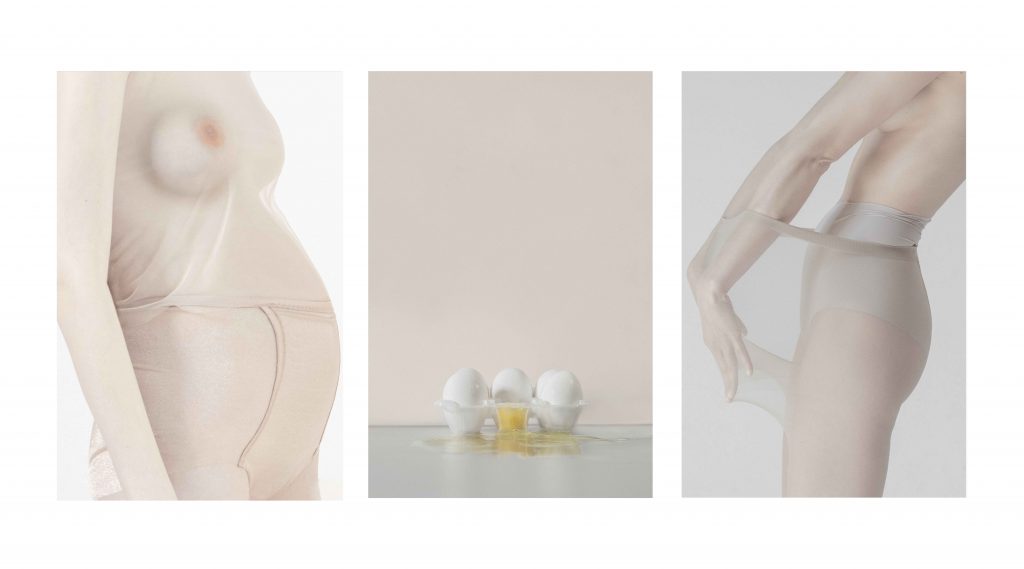
In some photos, this contrast between food and the body shows off aesthetic imperfections (as far as we take for granted the canonical beauty imposed by our society). What is the message you are sending?
Coming back to the binary relation with food, an apple does not cease to be an apple if it is spotty, unripe, or too mature. The life cycle should not be read as a declining trend, but, rather as a continuum of events and emotions which mark us. A relaxed belly, in this sense, can be the result of any past event, like pregnancy, for example. I see the body as the most powerful tool we have to communicate — it speaks of us, both for who we are now, and for our past.
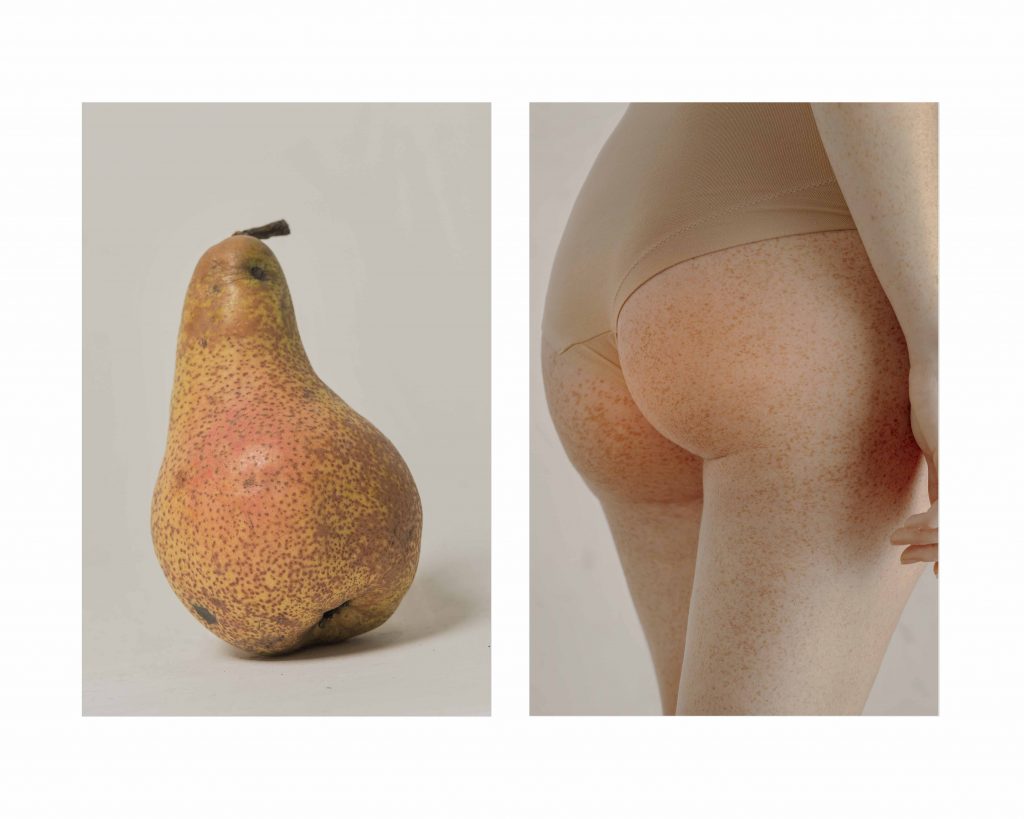
How do you approach beauty? Or the idea of it?
Beauty is not merely subjective, as it is the product of a specific historical and cultural moment. What is subjective is our perception of it, especially when referring to ourselves. In “Paura” (“Fear”), one of my last works, I denounce the subservience that many women feel to the stereotyped ideas of beauty. This often becomes a fear of not being skinny enough, charming enough, fit for the role that society imposes on us.
These fears are common to all women, not just one. In my project, I worked with the same model, stressing the concept of “One, No One, and One Hundred Thousand”. Different models would have produced many personal interpretations, turning something which is, unfortunately, ordinary, into a sporadic, individual event. I further emphasised this idea of beauty-fear through the clothes worn by the model. Fear is a ‘social’ emotion, induced by the superstructure imposed on us which, just like a dress, covers the real essence of being.
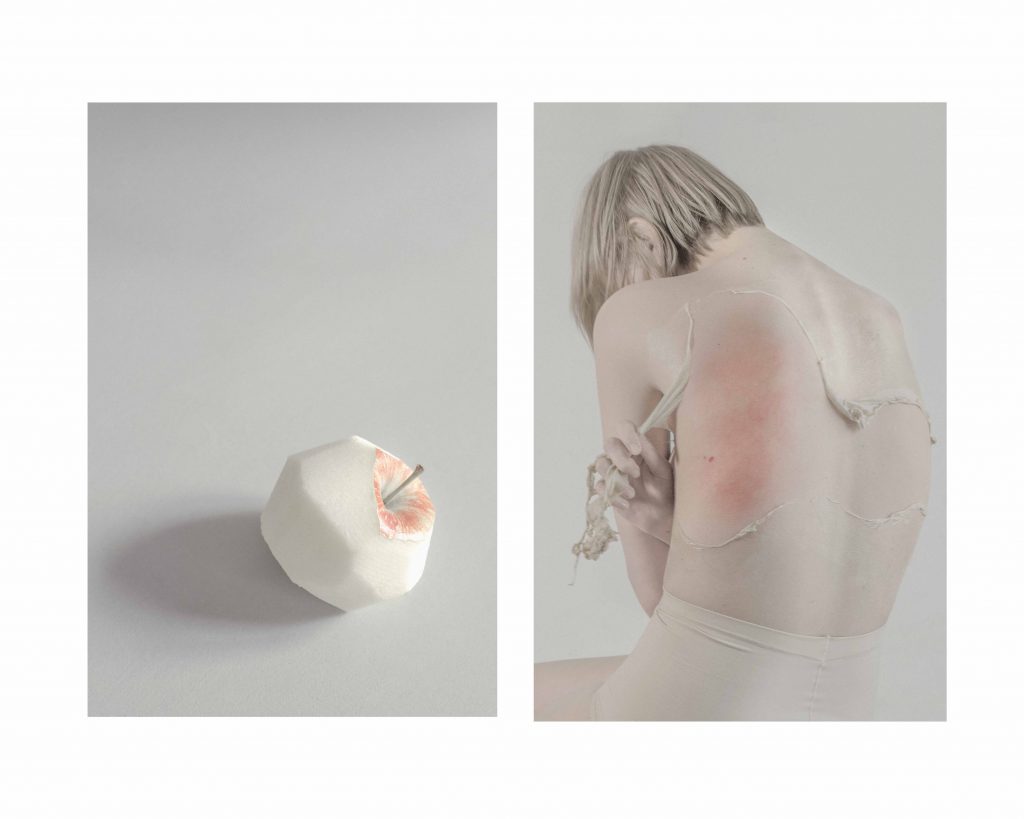
I sense a feeling of abjection in your work – the pregnant body, spilt milk, a runny burrata. Have you ever thought about this?
On a formal level, I try to create harmonic compositions, using pale colours, natural lights, and familiar items which do not scare the spectator away. This way, a deeper interpretation becomes possible, noticing the hidden meanings embedded in the work, and discovering abjection. Think about all those women that feel dried up while breastfeeding, not only by the act they repeat but by their very being during this phase. How many of them feel as if their skin is cracking; scratched by the pain?
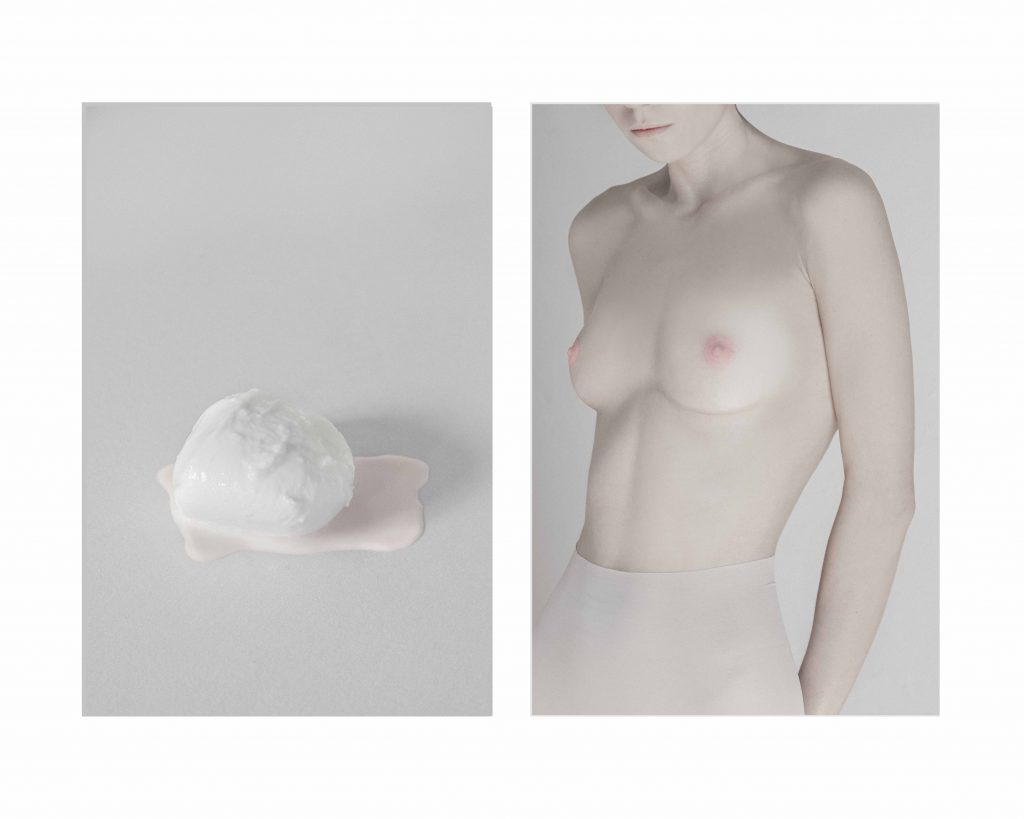
How do you reconnect with this play between repulsive/distorted objects and sensual bodies?
I try to show repulsive contents using tender images/language, looking out for harmony. In this binary game, I often assign to still life the idea of repulsiveness, rather than to the body. This way I both contain its charge and safeguard the gentleness enclosed in the narrative linked to the body.
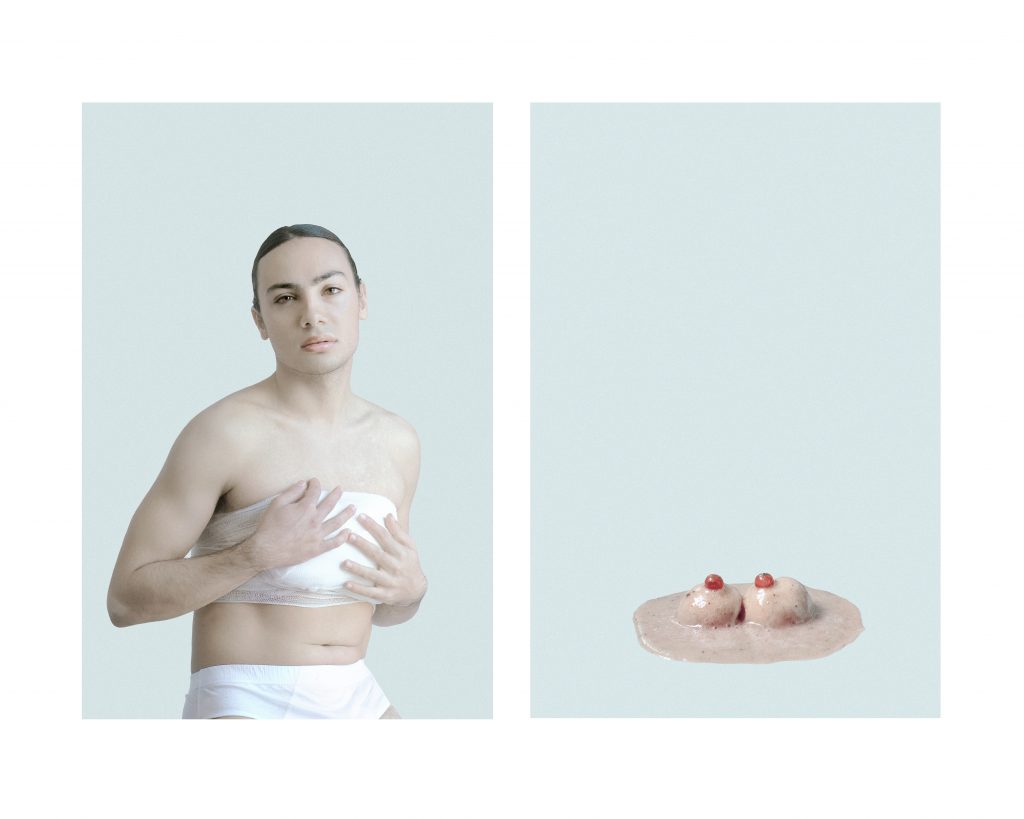
The subjects of your works are often naked exposed women or children. Yet the approach is violent, as they find themselves trapped into plastic bags, a fishbowl, paired to chicken legs. Is there a critique of society?
Nudity – both feminine or infantile – symbolises the lack of superstructures, becoming a critique to society when stripped from any given construct. Naked, the body also narrates the true essence of being. Covering it with an item of clothing would have hidden the intimacy of being, also attributing to the body the item’s biased meaning, deviating it from an ontological focus.
As for juvenile nudity, I’ve only used it in a more circumscribed way. In “Lockteen”, for example, it becomes the medium throughout which a child narrates his experience of the lockdown. Objects like the fishbowl recall the physical constraint, the difficulty, and the asphyxiation produced by this confinement, especially in children.
